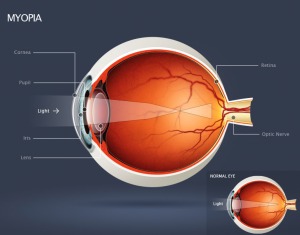Washington – Myopia isn’t an infectious disease, but short-sightedness has reached nearly epidemic proportions in parts of Asia.
In Taiwan, for example, the percentage of seven-year-old children who are short-sighted increased from 5.8 percent in 1983 to 21 percent in 2000. An incredible 81 percent of Taiwanese 15-year-olds are myopic. If you think that the consequences of myopia are limited to a lifetime of wearing spectacles – and, let’s be honest, small children look adorable in glasses – you are mistaken. The prevalence of high myopia, an extreme form of the disorder, in Asia has more than doubled since the 1980s, and children who have myopia early in life are more likely to progress to high myopia. High myopia is a risk factor for such serious problems as retinal detachment, glaucoma, early-onset cataracts, and blindness. The explosion of myopia is a serious public health concern, and doctors have struggled to identify the source of the problem. Near-sightedness has a strong element of heritability, but the surge in cases shows that a child’s environment plays a significant role. A variety of risk factors has been linked to the disorder: frequent reading, participation in sports, television watching, protein intake, and depression. When each risk factor was isolated, however, its overall effect on myopia rates seemed to be fairly minimal.
